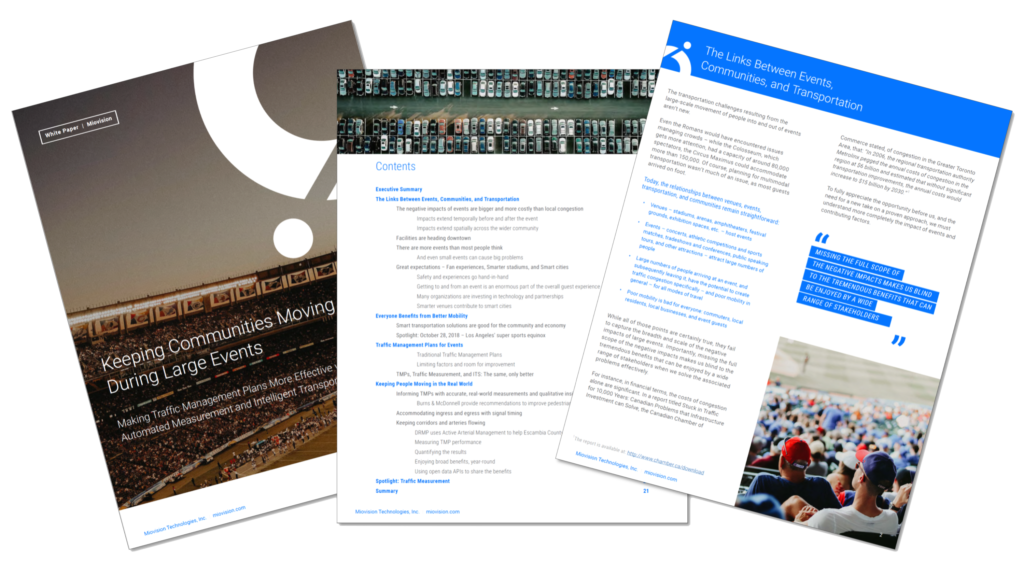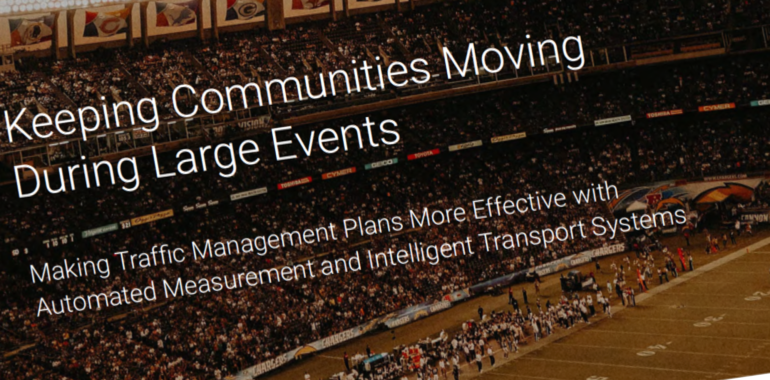Testing a Market Hypothesis: Q&A with Miovision’s Matt Trushinski
Recently, we helped our friends at Miovision with a bit of an exploratory project. They wanted to test a market hypothesis about a specific use case for their smart traffic solutions.
Testing a market hypothesis—as opposed to investing in projects regarded as ‘sure things’ or making only incremental adjustments to existing activities—is a rarity these days.
Just because we thought it was really cool doesn’t mean it’s a prevalent problem.
Matt Trushinski
To help more organizations to invest in experimental programs and to try new things, we ‘spoke’ with the driving force behind this initiative, Matt Trushinski.
In particular, we wanted him to explain why these initiatives are important, where the ideas originate, and how to manage risk.

Can you provide a bit of background on this initiative?
Sure!
Last year we had a brand new user buy Miovision’s Scout solution. They are a sports enterprise looking to use our data to improve the fan experience by helping stadium-goers get around quicker and easier.
Our team is always looking for examples of customers using our product in interesting ways, so we naturally wanted to know more about how the project went. More than that, we wanted to know how many other people may have this same problem.
In today’s age of distraction—characterized by short videos and vacuous LinkedIn posts—you’re perhaps a bit of an outlier because you invest in longer content. Why is longer content such an integral part of your strategy?
I would point to two things, one that I know for sure and one that is more speculative.
- Our customers are technical. They care about the details and they want to learn. They will only come to us if we provide sufficient value in our content to make it worth their time to read. Our customers are used to having detailed guides and manuals that they use on a daily basis to do their jobs. This flavour of content is part of their lives.
- I think longer content is working for the same reason as three-hour podcasts seem to be popular. Some people still want to see the 30-second clip of Elon Musk giving a soundbite on LinkedIn, but more and more people now want to see him smoke weed with Joe Rogan for 2 hours and a half hours. People are looking for substantive, nuanced, long-form discussions. Why wouldn’t this translate to the things that affect their careers?
Our customers are technical. They care about the details and they want to learn. They will only come to us if we provide sufficient value in our content to make it worth their time to read.
Aha! You keyed in on the fact that—even while at work—your customers are, surprisingly, humans. I certainly wouldn’t suggest that long content works for all markets. Nevertheless, I’m confident more companies should invest in this type of material. What do you think prevents other companies from pursuing the same strategy, and what advice can you offer them?
I would wager it’s a mix of not having the expertise internally to create more technical marketing resources paired with a lack of confidence the resources would provide an ROI for the time spent. I would advise them to know their customer better than anyone else in the building. Knowing them will tell you what kind of content they need—if any at all.
The project itself is much more than that one paper, though. What other pieces of content and activities is your team creating?
For content, we plan to leverage the main resource/paper by dividing it into smaller packages of learning for social channels. For other activities, we ran a great webinar on the subject, featuring Sal on our team. Our goal is to get the resource into the hands of our customers so the next time they are doing work with sports stadiums, it’s the first thing they turn to.
You and I have spoken at length about the benefits of getting a larger return on effort—whether by keeping campaigns alive longer, or getting more content pieces and activities out of an initiative, or other strategies. This project is a good example of that efficient, long-lasting approach. Why is it so important to avoid the mistake of one-and-done?
One and done is super expensive.
It’s a complete mistake to assume everyone heard you the first time. You may be bored with the content, but the hundreds of people hearing about it each time, for the first time, are not you—and they’re not bored.
It’s a complete mistake to assume everyone heard you the first time.
You mentioned to me—well, to everyone involved—that you saw the project as testing a market hypothesis. What did you mean by that characterization, and why do you think that approach is vital?
As I mentioned earlier: we saw one instance of this interesting use case, but just because we thought it was really cool doesn’t mean it’s a prevalent problem.
I think it’s great to ask questions.
What’s the response so far? Have you validated or refuted your market hypothesis? Or is it too soon to tell?
We have heard back both from the attendees of the webinar and those who have downloaded the resource that each was really informative. We have a bunch more plans to dig deeper into the use case and persona.
So no answer yet, but directionally we are pretty encouraged that we found a great opportunity in the market.
This was Salman’s first webinar, and it generated terrific attendance. Webinars can be hard to pull together and intimidating to deliver—what factors helped make this one so successful?
Sal did a fantastic job.
I would say this one went well because Sal spent a great deal of time to understand the topic and the audience in great detail. He knew what value he was providing and did more teaching than selling.
On a process level, the team has a great repeatable process for running webinars, which makes them far more efficient than if we tried to reinvent the wheel every time.
In a recent Crommunity podcast, the guest talked about a new leader who joined his company. In his introductory remarks, the leader commented that, “You guys are too digital. I’m analog. You’re not going to be able to make something that’s too different from what you’re making right now—just based on looking at retrospective data.” I know that comment resonated with you—can you explain why, and what it means for you?
I really like this outlook, but I would caution it only works if you already have someone looking at digital. Which is to say, having people who are ‘analog’ and others who are ‘digital’ seems like a really great balance.
Having only one of either seems disastrous.
My hope would be we have people internally who are analyzing data and finding those digital efficiencies, and others who are more analog, spending time talking directly with customers and prospects, listening, and thinking about brand new ways to help them solve problems.
Having people who are ‘analog’ and others who are ‘digital’ seems like a really great balance. Having only one of either seems disastrous.
Congrats on a successful, informative, and—frankly—fun campaign, and thanks for sharing your insights with us!
No problem. Thanks for being part of it!

About Matt
Matt Trushinski is Director, Product Marketing at Miovision, where he helps cities find smart solutions to transportation problems.
Matt’s made quite a few appearances in the pages of this site:
- He and I co-presented at the Waterloo Technology Chautauqua: Selling Technical Solutions in a World that Doesn’t Understand
- Along with Stella Wilhelm, Matt helped provide an oral history of Miovision’s wildly successful Clear Signals campaign
- Matt guest-hosted an episode of the Crommunity Podcast
- Matt was the guest on the inaugural episode of the Crommunity Podcast

